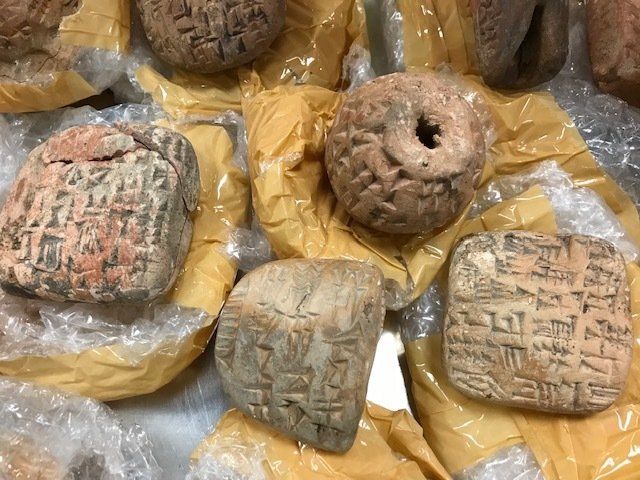Cultural Restitution
SHARE ARTICLE
Rarely do faked objects attract the same attention as genuine artefacts. But this week’s announcement by the British Museum of a large hoard of faked Middle Eastern antiquities, discovered by UK Border Force at Heathrow airport, confirms why it’s so important we expose this damaging trend in antiquities trafficking.
As greater numbers of new buyers with an appetite for genuine artefacts enter what is still a largely unregulated market, organised gangs and enterprising traders have been quick to exploit this growing demand with reproductions, duplicates and fakes.
The consignment which arrived at Heathrow in July 2019, on route from Bahrain to a private address in the UK, aroused the suspicions of a sharp-eyed Border Force officer. When two metal trunks were opened, a huge collection of ‘Mesopotamian’ clay tablets, figurines, cylinder seals and several ‘unusual’ animal-shaped pots was revealed, all carefully and individually packaged.
The British Museum was approached to examine photographs of some of these items, which they recognised were forgeries of no financial value.
The ‘cuneiform’ tablets appeared to represent almost a complete range of basic types known from ancient Mesopotamia: school texts, building inscriptions, administrative texts, a mathematical tablet and an inscribed amulet of a unique type excavated at the Assyrian capital of Nimrud. Although some of the inscriptions contained real signs and looked convincing, the rest comprised a jumble of signs, some invented, others upside-down, a complete mish-mash which made no sense when read.
‘It was as if the whole genre of ancient Mesopotamian writing was represented in one shipment,’ according to the Museum. ‘An entire collection ready for a single uninformed buyer’.
Experience of handling genuine artefacts provided the Museum’s curators with important clues to their authenticity, in particular, when they were manufactured. The size and thickness of the fake tablets failed to match originals in the Museum’s collection, a common error among forgers reproducing solely from photographs. Furthermore, the clay used for the fake objects was all of a similar type – impossible for objects that are meant to cover such a wide range of dates and functions. The clay had also been fired to a relatively high temperature, another sign the objects had been manufactured under controlled conditions in a modern workshop.
There’s nothing new about faking antiquities. As the Museum points out, the faking of tablets has been going on for over 200 years, even before cuneiform had been deciphered.
And neither is the problem unique to the Middle East. When a collection of Greek vases and sculptures was seized by the Carabinieri, Italy’s military police, in May 2018, on the grounds they’d been illegally excavated, other experts queried the authenticity of the objects and questioned their €900,000 valuation.
The greatest danger for both novice and experienced collector are sales made through online channels. These provide ideal shelter and anonymity for traders in fake antiquities. Without any provenance (a history which itself can be faked) or the opportunity for physical examination, it’s simply not possible to check whether or not an object is authentic. And unscrupulous traders know this.
With countries like Iraq clamping down more heavily on illicit excavation, looters are being outnumbered by modern-day forgers.
According to a Wall Street Journal investigation in 2017, the vast majority of antiquities now offered for sale on sites including WhatsApp, eBay, Amazon and Facebook, are either looted or fake. Other analysts have suggested this figure could be higher. In 2016, Syria's antiquities chief, Maamoun Abdulkarim said the percentage of faked antiquities recovered by anti-smuggling operations in Syria and Lebanon had risen from 30% in 2013 to closer to 70% three years later.
The Border Force’s recent vigilance ensures the British Museum’s hoard of faked Middle Eastern antiquities will never reach their intended destination. They’ll be used instead for teaching and training of Museum staff. But a lot more policing and vigilance will be necessary, online as well as on our borders, to ensure this damaging trade is halted - and before further collectors are duped.
Banner Photo: A selection of fake figurines
Photos © Trustees of The British Museum 2020
More News




